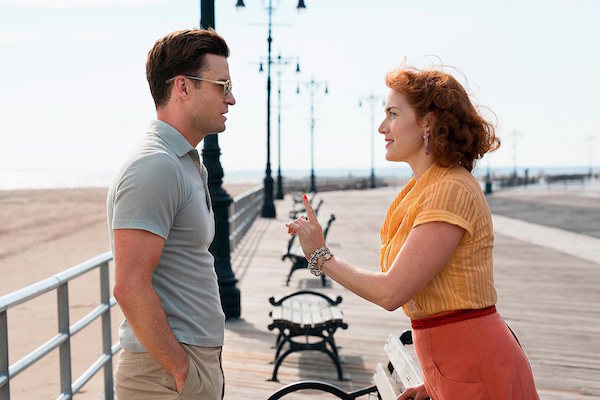
'Wonder Wheel' spins in too many directions
By Martha K. Baker
Woody Allen's latest film joins the other wonders of the season, but "Wonder" is wonder-full, as is "Wonderstruck." "Wonder Wheel" is not so wonderful as woeful. It refuses to find a focus, almost as if it's been on its own Ferris wheel and is dizzy with misdirection and indecision.
Allen wrote a story about a carousel operator at Coney Island in the Fifties. Humpty is married to Ginny, a waitress. Humpty's daughter Carolina by another wife appears on Coney Island, all dewy and bosomy, but she has married a gangster and the mob is after her. Just what Ginny needs, in addition to a little pyromaniac son from another husband.
Allen sets up the lifeguard to tell the story, an interested other. Mickey is first interested in the older woman and then becomes interested in the younger woman, and still he tells the story as if he's objective, up there almost omniscient on the lifeguard's stand at the ocean's edge.
Allen's story has the makings of melodrama, the kind found in a True Confessions magazine that no woman would have been reading in public on on that beach in the Fifties. To turn melodrama into a film watchable for two hours in the early 21st century would challenge any director -- it's a hard sub-genre to sustain unless it's being ridiculed. And, even then, who wants to listen to the Susan Hayward-screeching or watch the Richard Conte-posturing today even as a joke?
Kate Winslet is the headache-riddled screecher in "Wonder Wheel" and Jim Belushi is the undershirted posturer. Juno Temple is the un-ingenue, and Justin Timberlake is the lifeguard. They're all very trying.
The real winner in "Wonder Wheel" is Vittorio Storaro's cinematography. Rooms made red by the neon of the Ferris wheel in the honkey-tonk fairyland of Coney Island provide something satanic to look at.


